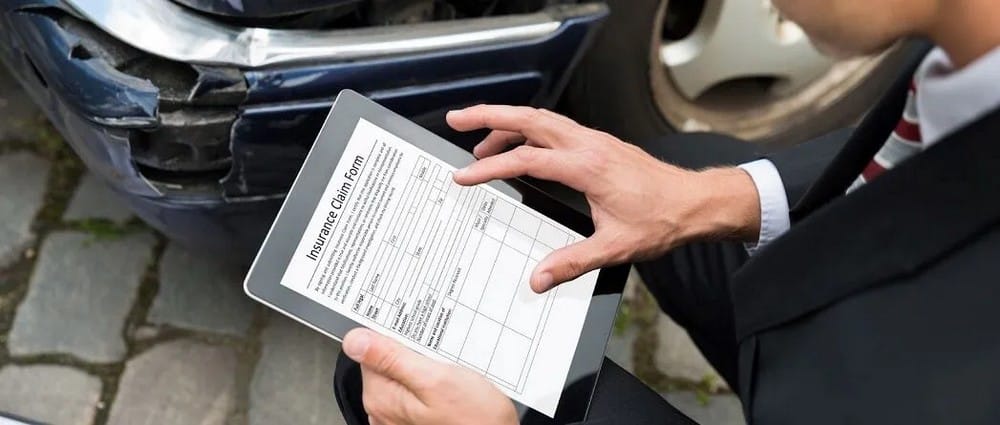
Car insurance—something we all have, but how many of us truly know what’s covered? If you’ve ever found yourself asking, “Is my car insurance really doing its job?”, you’re not alone. For many of us, the policy is a piece of paper we sign and forget about, trusting that everything will be fine. But here’s the thing: Is it really enough? And are you sure your policy is giving you the protection you need in case something goes wrong?
Let’s break it down and figure out how to make sure your car insurance is not just a box to check, but actually a safety net for your financial peace of mind.
Understanding the Basics of Car Insurance
Before we get into whether your insurance is enough, let’s start with the basics. Car insurance is there to protect you from the financial fallout of accidents, theft, or other unfortunate events that can happen while you’re behind the wheel. Sounds straightforward, right?
But what exactly does your insurance cover? Well, there are a few key types of coverage that make up a typical car insurance policy:
- Liability Coverage: This is what kicks in if you’re at fault in an accident and someone else gets hurt or their property is damaged.
- Collision Coverage: If you crash your car, this covers the cost of repairs (or replacement) to your own vehicle, no matter who’s at fault.
- Comprehensive Coverage: Think of this as the “everything else” coverage—it covers things like theft, vandalism, or damage from things like falling trees or natural disasters.
- Uninsured/Underinsured Motorist Coverage: This one’s a lifesaver when the person who hits you doesn’t have enough insurance—or any at all.
Having the right mix of these coverages is crucial. Because here’s the thing: no two drivers have the same needs. Maybe you’re a commuter who drives long distances every day, or perhaps your car’s a vintage gem that you’re looking to protect as carefully as possible. Your insurance should reflect that, so you’re fully covered when life (or a reckless driver) throws you a curveball.
Common Car Insurance Gaps to Watch Out For
Even if you think you’re covered, there might be gaps in your insurance that leave you exposed. These gaps can cause huge headaches, especially if something happens and you realize your policy isn’t as comprehensive as you thought.
Underinsured Motorist Coverage
Here’s a scenario: you’re in a car accident. The other driver is at fault—but, uh-oh, they don’t have enough insurance to cover the damages. What happens? That’s where underinsured motorist coverage comes into play. This coverage kicks in when the other driver’s insurance isn’t enough to cover your costs. If you don’t have it, you could end up paying out of pocket for medical bills or car repairs that should have been covered.
Comprehensive Coverage Misconceptions
Some people think “comprehensive coverage” covers everything, but it doesn’t. It’s not about accidents that happen when you’re on the road—it’s more about the other stuff: theft, vandalism, or even a tree branch falling on your car during a storm. If you’re thinking you’re covered for everything under “comprehensive,” it might be worth a quick look to ensure you’re not missing something important.
Exclusions and Fine Print
Oh, the fine print. It’s that tiny text you probably skimmed when signing your policy, right? But that’s where exclusions live. From damage caused by natural disasters to theft that happens outside certain hours or locations, there may be exclusions that leave you high and dry in a tough situation. It’s easy to overlook these, but understanding exactly what your insurance won’t cover is just as important as knowing what it will.
Signs That Your Car Insurance Might Not Be Enough
So, how do you know if your policy isn’t giving you the protection it should? There are a few signs to look out for.
You’re Paying Too Little for Coverage
We all like to save money, but if your premium is suspiciously low, there’s a chance you might be cutting corners. Insurance companies adjust premiums based on your coverage limits, so if you’re paying less than average for your policy, it could mean you’re underinsured. And that could spell trouble if you get into an accident.
Your Car’s Value Is Higher Than Your Coverage Limit
If your car’s worth more than what you’re insured for, you might end up in a tough spot. Let’s say you’ve got a high-value car, but your coverage limit is based on an older model or a lower-value vehicle. If you have a major accident, your insurance might not cover the full replacement cost. Make sure your policy reflects the current value of your car. Regularly reviewing your coverage ensures you’re not caught off guard.
You’ve Made Changes to Your Car or Driving Habits
Have you moved to a different neighborhood or started driving more often? These life changes can affect your car insurance needs. If you’re now commuting longer distances or driving in areas with higher traffic, it could increase your risk—and, therefore, your need for more coverage. It’s important to let your insurer know about these changes so they can adjust your policy accordingly.
How to Evaluate Your Current Car Insurance Policy
If any of the signs above hit home, it’s time to evaluate your current policy. Don’t just take it for granted that your insurance is fine as is. Here’s how to make sure you’re fully covered.
Review Your Coverage Limits
Go through your policy and take a close look at your coverage limits. Are they high enough to cover the cost of medical bills, car repairs, or even a replacement vehicle if necessary? Compare your current coverage to what’s available in the market to make sure you’re not leaving yourself exposed. Don’t forget to look at the limits for things like liability, medical payments, and property damage—sometimes, all it takes is a small adjustment to make sure you’re fully covered.
Consider Adding Extra Coverage Options
While basic coverage is necessary, there may be some additional options that could save you money or offer more peace of mind. Options like roadside assistance or rental car coverage might seem like extra costs, but they can be lifesavers if your car breaks down or is in the shop. Gap insurance is another option to look into—especially if you owe more on your car loan than your car’s current market value.
Check the Claims Process and Customer Service Ratings
It’s not just about coverage—it’s also about how your insurer handles claims. If you find yourself in an accident, you want to make sure your insurance company has a smooth, efficient claims process. Look for reviews or customer service ratings to see how responsive your insurer is. A policy might look great on paper, but if the company drags its feet when you need them most, it’s not worth it.
Do You Need New Car Insurance Quotes?
If you’ve reviewed your current policy and realized it’s lacking or just isn’t meeting your needs anymore, it’s time to consider looking at car insurance quotes from trusted providers. Shopping around can help you find better coverage for a similar or even lower price, depending on what you need. And it’s not just about saving money—it’s about getting the right protection that fits your lifestyle.
By comparing different quotes, you can see where your current insurance may fall short or find opportunities to add more comprehensive coverage options that could save you from financial headaches down the road. Sometimes, just switching providers or adjusting your coverage limits can give you the protection you really need without breaking the bank.
What to Do If Your Car Insurance Isn’t Enough
If you’ve done the math and realized your policy isn’t cutting it, don’t panic. There are steps you can take to make sure you’re getting the protection you need.
Speak with Your Insurance Agent
Start by talking to your insurance agent. They’re there to help you understand your policy and make changes when necessary. Whether it’s adjusting your coverage limits or adding extra options, your agent can help you find a plan that fits your needs.
Shop Around for Better Options
It never hurts to shop around. Don’t feel locked into your current insurance provider—compare quotes from multiple companies to make sure you’re getting the best deal for the coverage you need. Insurance premiums can vary, and a small adjustment in your policy could save you a lot of money while providing better protection.
Take Proactive Steps to Safeguard Your Car
Finally, take steps to reduce your risk. Park in secure locations, install anti-theft devices, and follow safe driving practices. The more proactive you are, the less likely you’ll need to rely on your insurance.
Conclusion
So, is your car insurance really protecting you? Now that you’ve got the tools to evaluate your policy, you should feel confident about making any necessary adjustments. Whether it’s reviewing your coverage limits, adding extra options, or just shopping around for a better deal, taking a proactive approach to your car insurance ensures you’ll be ready for whatever comes your way.
At the end of the day, insurance is about protecting yourself and your loved ones. Don’t wait until something happens to find out your coverage isn’t enough. Take a few minutes today to review your policy and make sure it’s truly doing its job. You’ll be glad you did.








